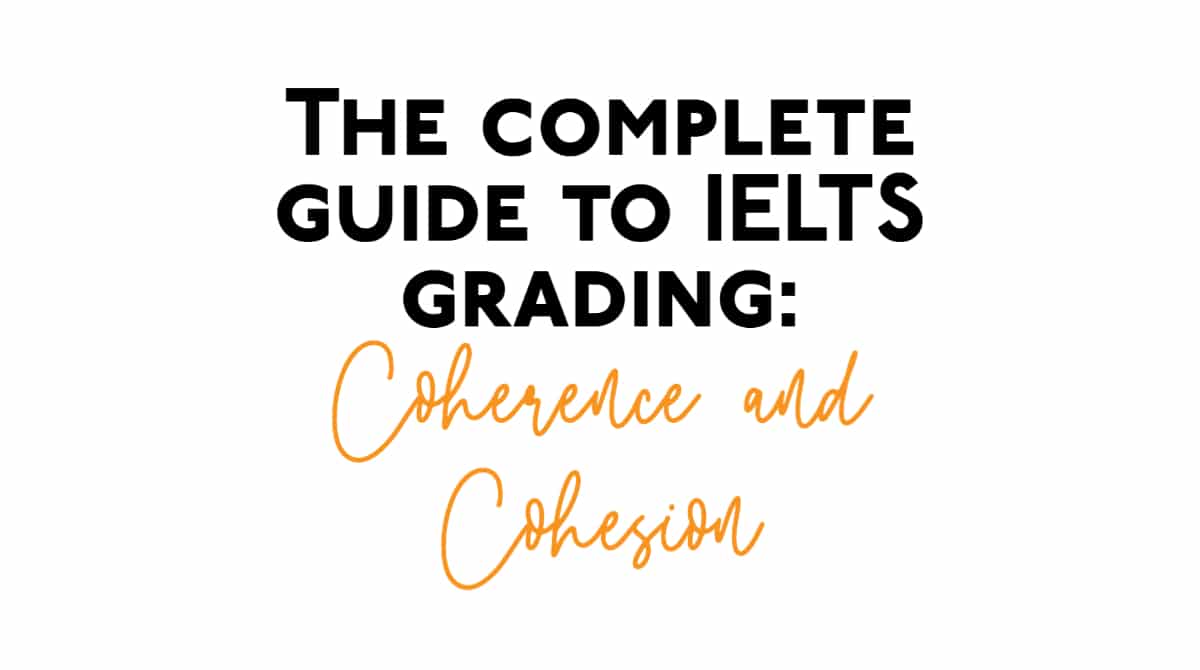


What do the band descriptors tell us about IELTS speaking fluency and coherence? a traditional product from your country.a time when you made a hard decision which had a positive result.Plus, if you would like to join our IELTS speaking challenge next week, you can choose from the following questions and email your recording to a well-known and popular person in your country The band descriptors tell us that it is the use of “connective devices and discourse markers”, but are discourse markers the same as transition signals? And what exactly are connective devices in speech? That is what Nick and I explain in today’s episode.

Your final score will be the average of these four scores rounded down (yes, you read that correctly, the scores will be rounded down, so you will need an average of at least 7.0 to achieve that score). However, recently I realised that that there is a lot of confusion among students as to exactly what the examiner is looking for when they grade IELTS speaking Fluency and Coherence.įluency is relatively clear and easy to understand – that is your ability to speak without pauses or hesitations for languages. Both of these are acceptable for the IELTS exam but I always recommend students to leave a line because it makes your paragraphs as obvious as possible to the examiner.In the IELTS Speaking exam, the examiner will give you a score in 4 areas: Fluency and Coherence, Lexical Range, Grammatical Range and Accuracy, and Pronunciation. The first is to indent your paragraphs, the second is to leave a line between your paragraphs. There are two ways of making paragraphs in English. When you do this, you lose cohesion from your paragraph. If you go for a broad idea, your supporting sentences will have to cover a lot of topics to fully cover that issue. What that means practically is that you should pick a quite narrow topic for each of these paragraphs. We can see that the examiners are looking for a “clear central topic” for each paragraph. The final aspect of coherence and cohesion is paragraphing. Make sure it’s always clear who you’re referring to. However, we also should not fall into the trap of using pronouns too often. They argue that these charges make it too expensive for them to get to work.įrom this example, we can see that without referencing our writing would get boring quickly. Congestion charges have been opposed by regular commuters.Regular commuters argue that congestion charges make it too expensive for regular commuters to get to work every day. It’s best to demonstrate why this is important so here’s an example: Referencing is about using pronouns and relative pronouns to make your writing less repetitive. To show an idea is linked to the previous idea: Some important uses of cohesive devices are: To give the order of your ideas or tell the reader where in your essay they are: However, it’s a much better idea to learn a few and be able to use them perfectly. Students often want to study cohesive devices by memorising a long list of them. Use your conclusion to remind the examiner of what your body paragraphs were about and to emphasise your thesis statement.Ĭohesive devices are short phrases that don’t carry meaning on their own but show the relationship between different parts of your writing.The supporting sentences in the body paragraph should link to that paragraph’s topic sentence. In your body paragraphs, have a clear topic sentence which is linked to your central argument.

#Cohesion and coherence in ielts how to
In this post we’ll take a look at what each of those things means as well and how to improve your coherence and cohesion score. When grading this section, your examiner will be looking at: Coherence and cohesion is about how well you organise your ideas and how well those ideas flow into one another.


 0 kommentar(er)
0 kommentar(er)
